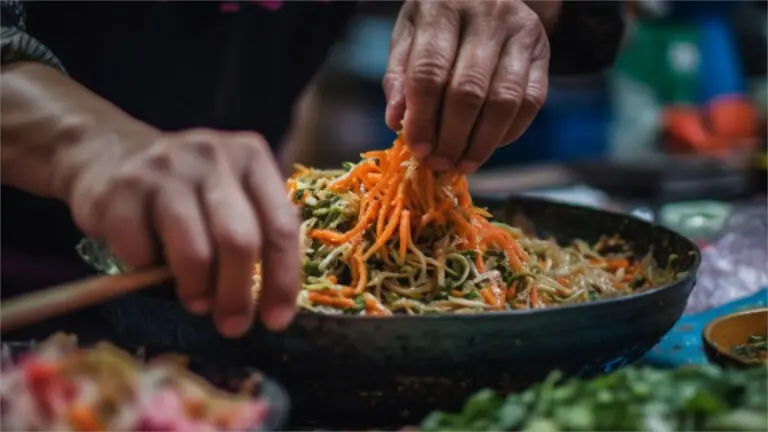
MARCH 2025 INFLATION LOWER THAN EXPECTED
In the last 5 months between October 2024 and March 2025, headline inflation has progressively fallen from a high of 6.21% to 3.34%. In the same period, food inflation has plummeted from 10.87% to 2.69%. Even as the Fed turned dovish in September 2024, RBI had held rates steady. That strategy appears to be paying off. For March 2025, the headline CPI inflation at 3.34% was 26 bps below Reuters estimates at 3.60%.
A combination of 3 factors worked to bring down food inflation in last 5 months. The Rabi crop was much better than expected due to overflowing reservoir levels. Secondly, there has been a steady flow of foodgrains to the mandis and that has helped temper price. Lastly, the government has intervened in supply chain smoothening and managing inventories; which was a key factor in containing inflation.
FOOD INFLATION FALLS; BUT CORE INFLATION STICKY
March food and headline inflation were sharply lower, despite a lower base, but core inflation remained sticky. The table captures 13 months data.
| Month | Food Inflation (%) | Core Inflation (%) | Headline Inflation (%) |
| Mar-24 | 8.52% | 3.24% | 4.85% |
| Apr-24 | 8.70% | 3.23% | 4.83% |
| May-24 | 8.69% | 3.12% | 4.80% |
| Jun-24 | 9.36% | 3.14% | 5.08% |
| Jul-24 | 5.42% | 3.39% | 3.60% |
| Aug-24 | 5.66% | 3.40% | 3.65% |
| Sep-24 | 9.24% | 3.49% | 5.49% |
| Oct-24 | 10.87% | 3.67% | 6.21% |
| Nov-24 | 9.04% | 3.64% | 5.48% |
| Dec-24 | 8.39% | 3.58% | 5.22% |
| Jan-25 | 6.02% | 3.67% | 4.26% |
| Feb-25 | 3.75% | 3.95% | 3.61% |
| Mar-25 | 2.69% | 4.10% | 3.34% |
Data Source: MOSPI & Ministry of Finance Estimates
Here are some key takeaways from the table above.
Did the triggers for falling inflation come from rural or urban India?
NON-FOOD INFLATION: URBAN STORY VERSUS RURAL STORY
Here is the macro picture. Between February 2025 and March 2025, headline inflation moderated from 3.61% to 3.34%. During this period, headline rural inflation fell from 3.79% to 3.25%, while headline urban inflation was actually up from 3.32% to 3.43%. What about food inflation? Between February 2025 and March 2025, headline food inflation moderated from 3.75% to 2.69%. However, rural food inflation fell from 4.06% to 2.82%, while urban food inflation fell from 3.15% to 2.48%. Urban India has faced stress in non-food basket.
| Non-Food Basket |
Non-Food Weights |
Rural Inflation |
Urban Inflation |
Headline Inflation |
| Clothing | 6.32 | 2.66 | 2.91 | 2.71 |
| Footwear | 1.04 | 1.67 | 2.55 | 2.02 |
| Clothing and footwear | 7.36 | 2.51 | 2.83 | 2.62 |
| Housing | – | – | 3.03 | 3.03 |
| Fuel and light | 7.94 | 0.94 | 2.33 | 1.48 |
| Household goods and services | 3.75 | 2.18 | 3.22 | 2.68 |
| Healthcare | 6.83 | 4.17 | 4.39 | 4.26 |
| Transport and communication | 7.60 | 3.55 | 3.09 | 3.30 |
| Recreation and amusement | 1.37 | 1.86 | 2.84 | 2.40 |
| Education | 3.46 | 3.76 | 4.08 | 3.98 |
| Personal care and effects | 4.25 | 13.33 | 13.69 | 13.50 |
| Miscellaneous | 27.26 | 5.05 | 4.89 | 4.99 |
Data Source: MOSPI & Ministry of Finance Estimates
Where is rural India lower and where is urban India lower in non-food inflation? Rural India has improved in terms of fuel & lighting inflation. Here, the inflation is 0.94% in rural India, but 2.33% in urban India. Transport and communication inflation is still higher in rural India at 3.55% compared to 3.09% in urban India. Even inflation in miscellaneous items is higher in rural areas. However, rural inflation saw lower inflation in most core items like clothing footwear, home goods, healthcare, and education. Personal Care & Effects inflation is more about spike in gold prices.
FOOD BASKET: HOW RURAL AND URBAN INDIA STACKED UP?
Food basket, with a weightage of 47.25%, is a critical swing factor for inflation. In March 2025 food inflation played a key role, tapering to 2.69%.
| Food Basket |
Food Weights |
Rural Inflation |
Urban Inflation |
Headline Inflation |
| Cereals and products | 12.35 | 6.08 | 5.52 | 5.93 |
| Meat and fish | 4.38 | 0.09 | 0.71 | 0.32 |
| Egg | 0.49 | -3.84 | -2.06 | -3.16 |
| Milk and products | 7.72 | 2.57 | 2.56 | 2.56 |
| Oils and fats | 4.21 | 18.41 | 14.67 | 17.07 |
| Fruits | 2.88 | 16.67 | 15.85 | 16.27 |
| Vegetables | 7.46 | -6.30 | -8.22 | -7.04 |
| Pulses and products | 2.95 | -2.70 | -2.78 | -2.73 |
| Sugar and Confectionery | 1.70 | 3.98 | 3.77 | 3.89 |
| Spices | 3.11 | -5.67 | -3.37 | -4.92 |
| Non-alcoholic beverages | 1.37 | 3.73 | 4.52 | 4.01 |
| Prepared meals | 5.56 | 3.57 | 5.03 | 4.30 |
| Food Basket | 47.25 | 2.82 | 2.48 | 2.69 |
Data Source: MOSPI & Ministry of Finance Estimates
Here are the key items in the inflation basket across rural and urban segments.
Not only is headline inflation at a 67-month low, but even food inflation is the lowest in recent memory at just 2.69%.
JUNE MPC MAY AGAIN SEE 25 BPS RATE; UNLESS Q4 GDP SPIKES
RBI has already cut rates by 50 bps from 6.5% to 6.0% in last 2 monetary policies in February and April. Will there be another rate cut in June 2025? With food and headline inflation at low levels of 2.69% and 3.34% respectively; RBI has the luxury of another rate cut. However, there are some other considerations that will come into play. Firstly, if the Q4FY25 GDP to be announced in end of May spikes sharply, the RBI MPC may hold back on rate cuts.
Secondly, there is the possibility that if the rupee gets closer to its recent low of ₹87.5/$, the RBI MPC may hesitate to cut rates as it could weaken the rupee further. Thirdly, if there is a global slowdown likely, the RBI may want to retain its dovish options for a future date. A lot will depend on how GDP numbers manifest, how the global macro risks evolve, and how the rupee behaves vis-à-vis the US Dollar and the Chinese Yuan!
Related Tags

![]() IIFL Customer Care Number
IIFL Customer Care Number
(Gold/NCD/NBFC/Insurance/NPS)
1860-267-3000 / 7039-050-000
![]() IIFL Capital Services Support WhatsApp Number
IIFL Capital Services Support WhatsApp Number
+91 9892691696
IIFL Capital Services Limited - Stock Broker SEBI Regn. No: INZ000164132, PMS SEBI Regn. No: INP000002213,IA SEBI Regn. No: INA000000623, SEBI RA Regn. No: INH000000248
ARN NO : 47791 (AMFI Registered Mutual Fund Distributor)

This Certificate Demonstrates That IIFL As An Organization Has Defined And Put In Place Best-Practice Information Security Processes.